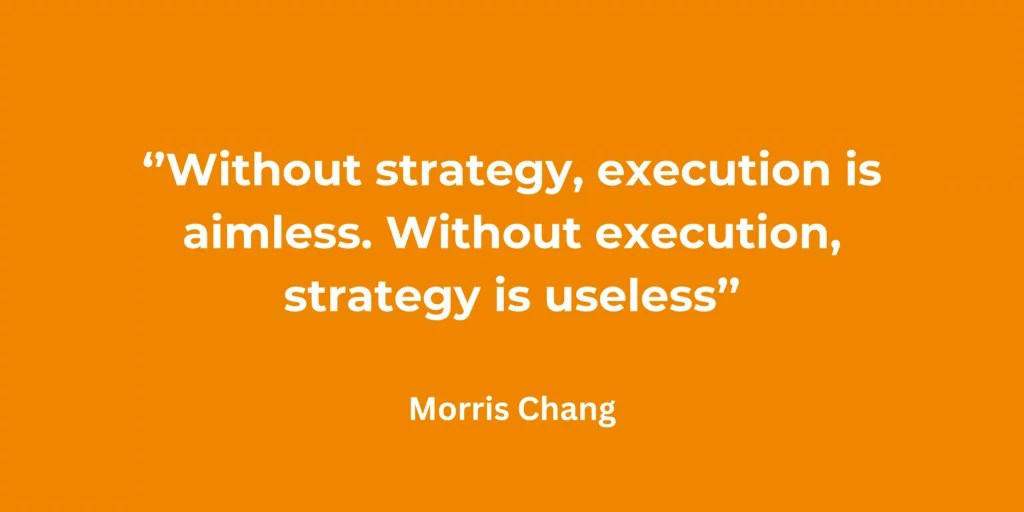
Many organisations are still applying strategic tools and processes that are too rigid, too cumbersome, and too unwieldy for today’s challenges. Its time for a change!
We recommend 3 actions that will allow you to create a strategic direction and implement it despite the storms you face: focus, ranges & sprints.
Focus only on the ‘wildly important’
We regularly find that senior teams employ a ‘kitchen sink’ approach to developing strategy. Their ambition means they throw everything into a strategic plan, they add more activity onto an already overloaded workforce, traction becomes difficult and results are then disappointing.
Our recommendation: Start with a long ‘wish list’ but at the end you need less than five strategic focus areas. Through discussion or using an impact/readiness matrix identify the ‘wildly important’ things that are going to add significant value to your organisation. This can bring the wildly important 1 to 3 areas to the fore. These shouldn’t be incremental operational outcomes, more likely to be organisational shifts or reinventions of some type. This provides focus, clarity, resource mobilisation & a greater likelihood of implementation and follow through. And then assign single leadership responsibility for each focus area.
Use ranges to quantify your strategic outcomes
Strategic outcomes are a prediction, forecast or projection for an outcome that maybe 12 months or longer away. And they are usually wrong! Especially nowadays, with the number of unexpected events happening which we can’t foresee. So, what can we do?
Our recommendation: Set outcomes, targets or goals in the form of a range, with a low and high point. This provides room for external events during the year and internal trade-offs between competing strategic pillars. Ranges are also more motivating for employees to reach than trying to hit a single, specific, usually very ambitious, target or number. Make the lower one realistic and the upper one ambitious and see what happens.
Set and review activities in short sprints
Strategy is a pointless activity if identified outcomes aren’t realised because delivery is compromised in some way. Operational demands, employee fatigue, complexity, external disruption all conspire against execution. Some are within leadership control and of course some aren’t. How can we make sure that the ‘rubber hots the road’?
Our recommendation: Don’t set longer term plans, even for a year. Set an outcome you want to achieve in a year, set the general direction for activities only and then build iterative plans for shorter sprints using OKRs to focus activity. With our clients a popular sprint timeframe is 3 months. And this quarterly rhythm provides the critical space to regularly return to the strategy to realign it, by:
- Checking your thinking on the strategic pillars, overall outcomes and target ranges you set
- Adjusting them where necessary; even dropping priorities if things change significantly
- Bringing in new priorities if something has emerged since the strategy was set (be prepared to de-prioritise others to aid execution!)
- Reviewing progress of just completed sprint actions
- Setting actions for the next sprint
These actions carried out on a quarterly basis means the strategic plan stays alive, relevant and momentum is maintained.
Making it happen
Where do you start. First, keep setting strategic direction, see the ‘icebergs’ that keep coming your way as potential opportunities and see internal resistance and inertia to strategic change is normal, so spend time ‘unsticking’ it.
Shift the way you think about strategy yourself; bring in more flexible methods and some new tools that suit our fast, complex, uncertain markets and economies. We have experimented with the way we do it in our organisation and have used that learning with our clients. They have found it liberating, relevant and pragmatic.
We recommend to start here with the strategic trinity of ‘must-dos’ to be successful in an uncertain world:
- Focus only on the ‘wildly important’
- Use ranges to quantify your strategic outcomes
- Set and review activities in short sprints
Author: Phil Isle – Senior Facilitator & Coach